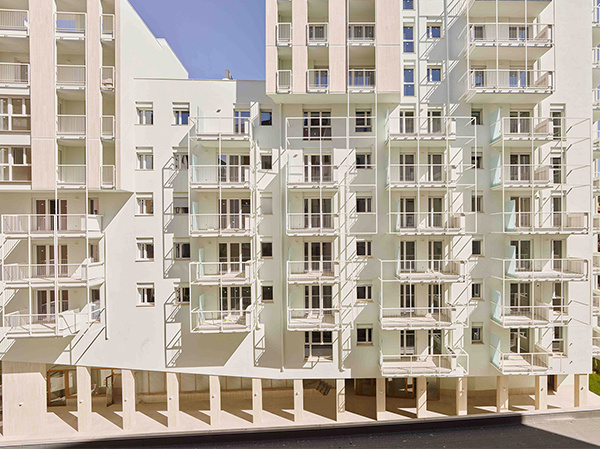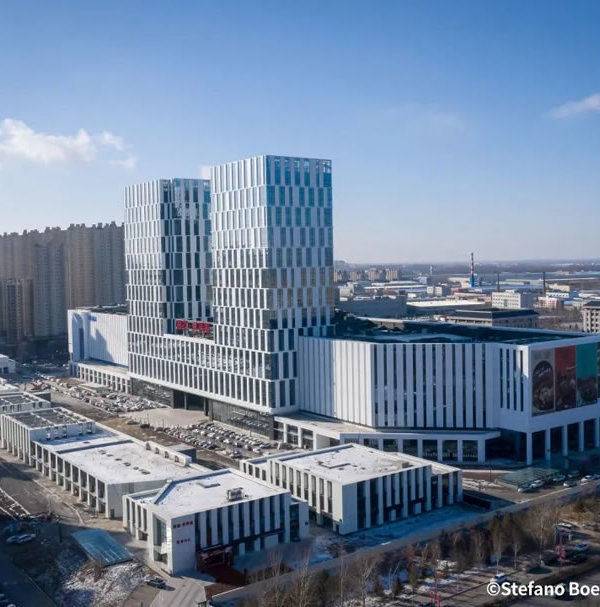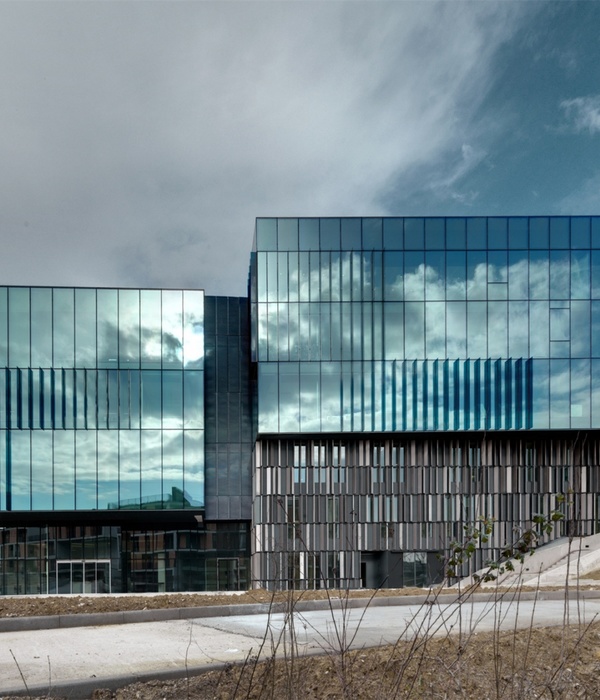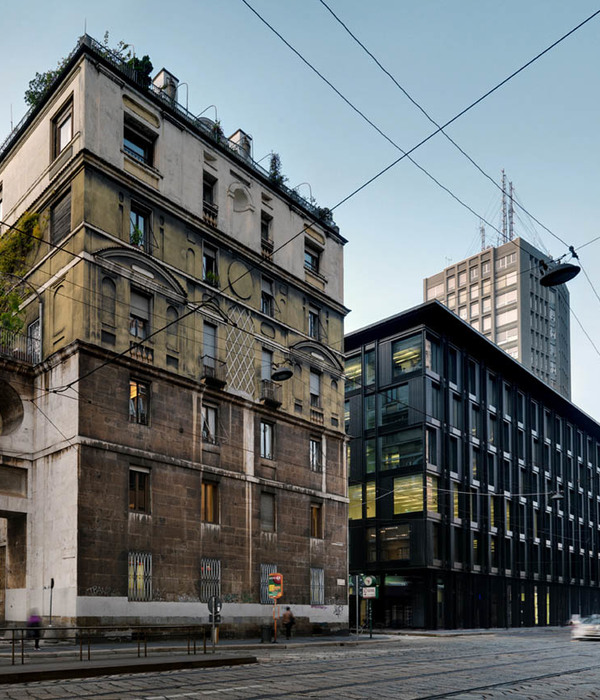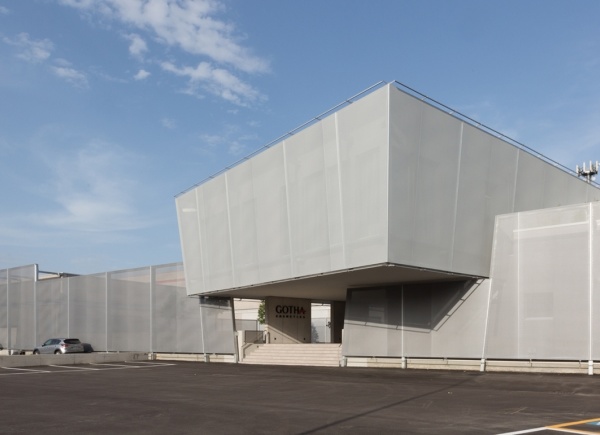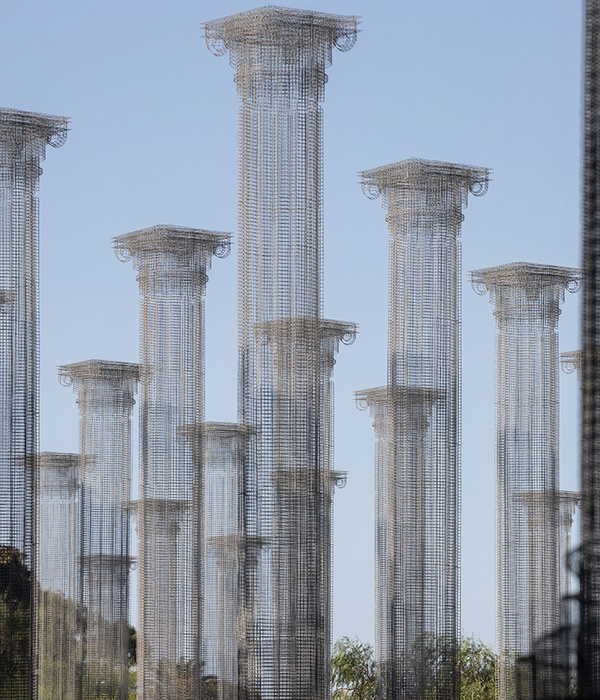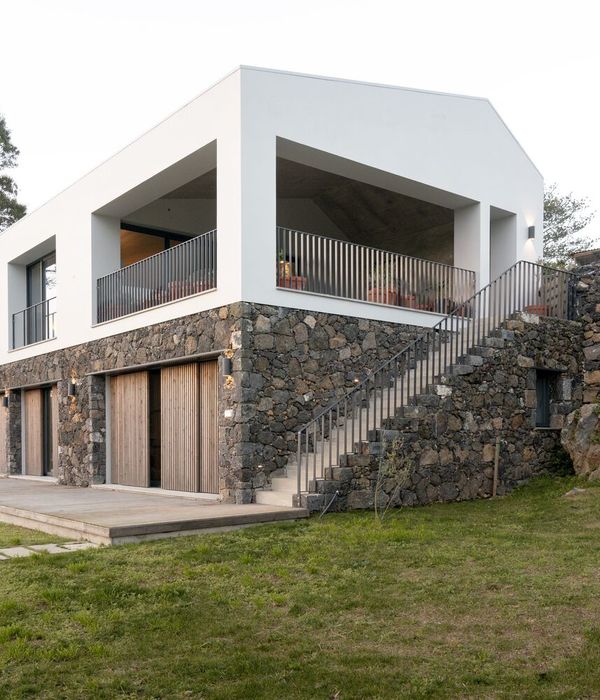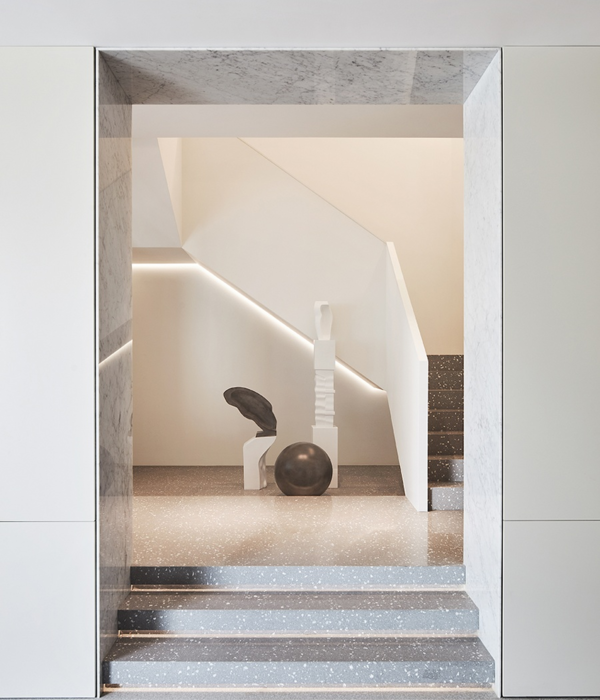森林中的孵化器——法裔美籍国际学校中学设计
如何通过学校设计来培养适合中学生发展的社会独立性,确保他们在成长为世界公民的过程中得到启发,从而主动学习并超越自我?
How can the design of a school foster the social independence that is developmentally appropriate for middle school students, ensuring that they are inspired to take initiative for their own learning and to think beyond themselves as they mature into global citizens?
▼项目概览,overview of the project
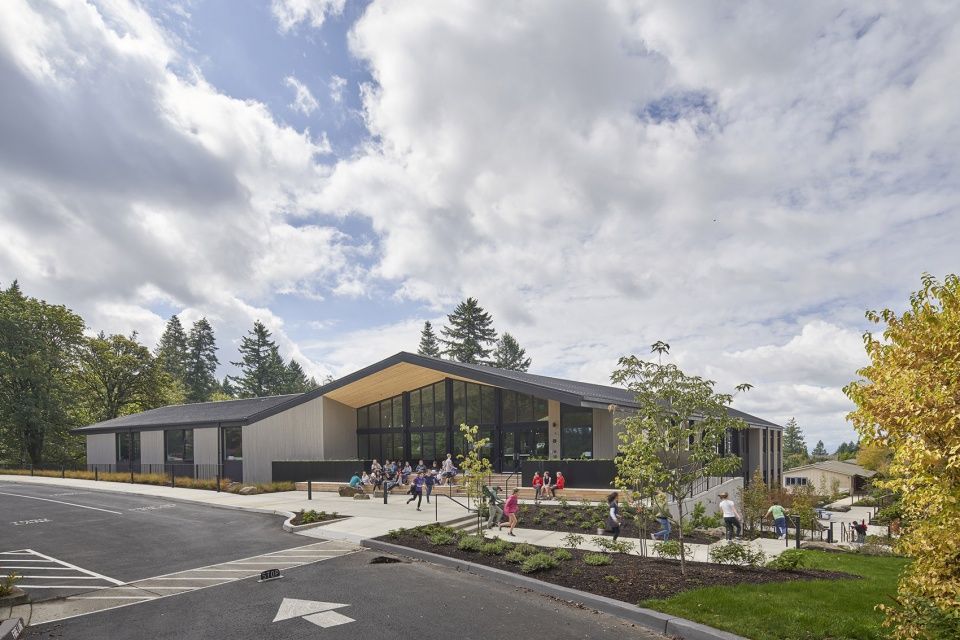
▼项目街景,street view
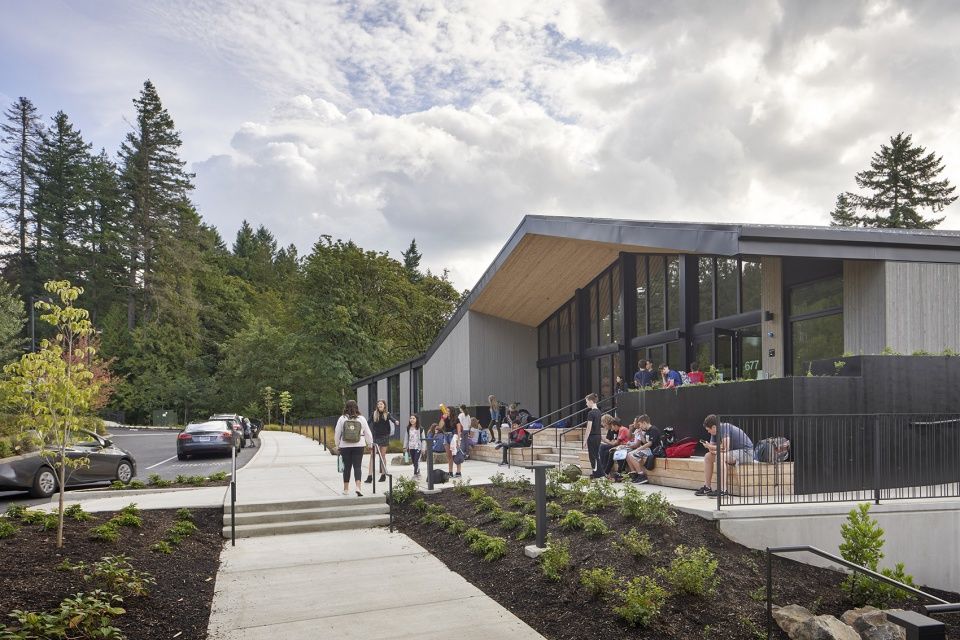
法裔美籍国际学校(FAIS)设想以永久性结构取代其有20年历史的模块化教室时开始思考这些问题。当时,学生们在有室外通道的分散模块式建筑中上课,他们在多雨的天气里没有干燥、温暖的社交空间用于聚会、非正式学习或独立探索,由此一来FAIS将新中学提上日程,作为他们的首要优先项目。
The French American International School (FAIS) began thinking about these issues in planning for the replacement of their 20-year-old modular classrooms with permanent structures. At the time, middle schoolers were taught in scattered, modular buildings with outdoor circulation in a rainy climate and no dry, tempered social spaces for gathering, informal learning, or independent student discovery, which led FAIS to choose the new Middle School as their first prioritized project.
▼项目沿街外立面夜景,night view of the facade along the street
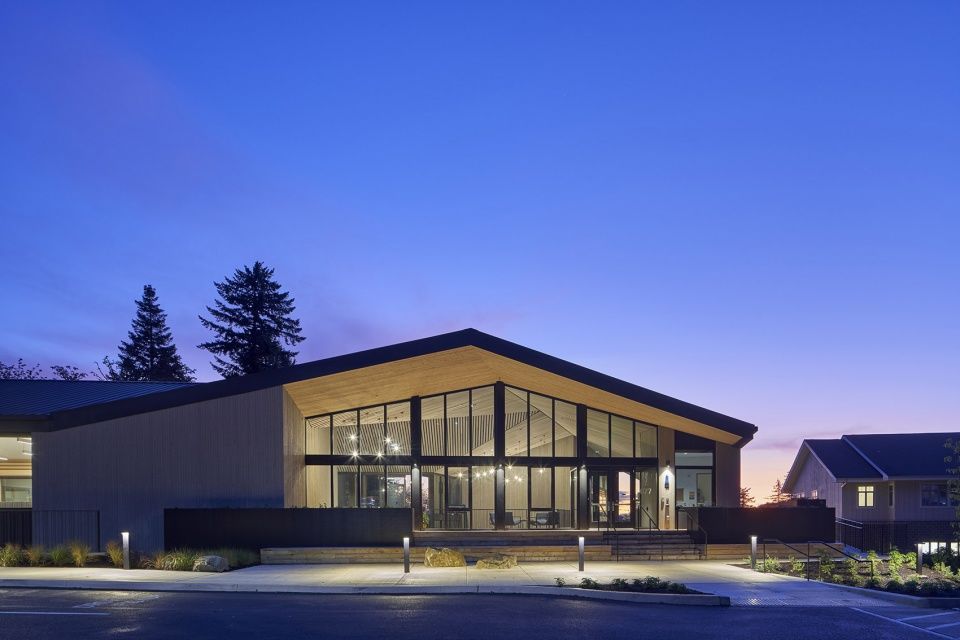
FAIS为中学和校园的其他规划制定了大胆的可持续性和弹性目标。学校采用多语言和国际化的教学方法,其目标是培养下一代的全球领导人和创造性思想家;这也受到邻近森林和可以观察到栖息地、生态系统和生命循环的丰富学生实践学习机会的影响。
FAIS set bold goals for sustainability and resilience for the Middle School and the rest of their campus plan. Their pedagogy is multi-lingual and internationally focused, and their goal is to prepare the next generation of global leaders and creative thinkers; it has also been strongly influenced by the adjacent forest and the bounty of hands-on learning opportunities in the habitats, ecosystems, and life cycles students can observe there.
▼毗邻森林的校园环境,campus influenced by the adjacent forest

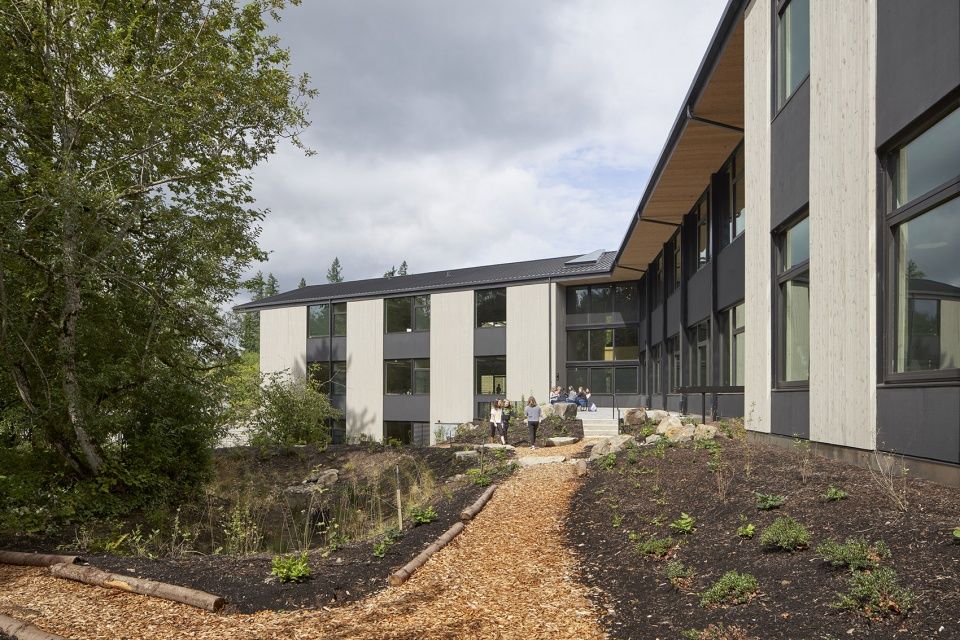
▼室外实践学习空间,outdoor hands-on learning space
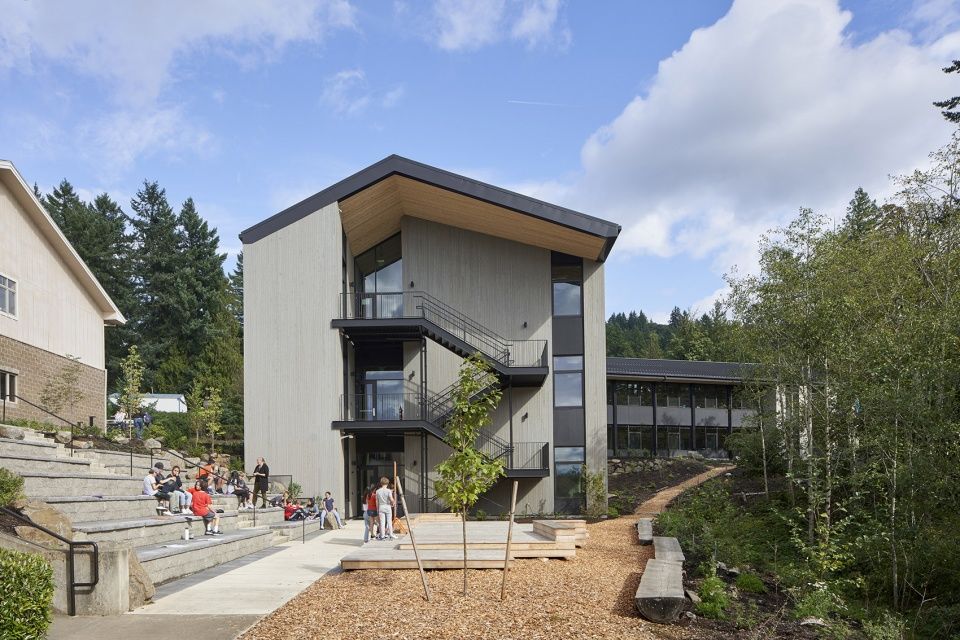
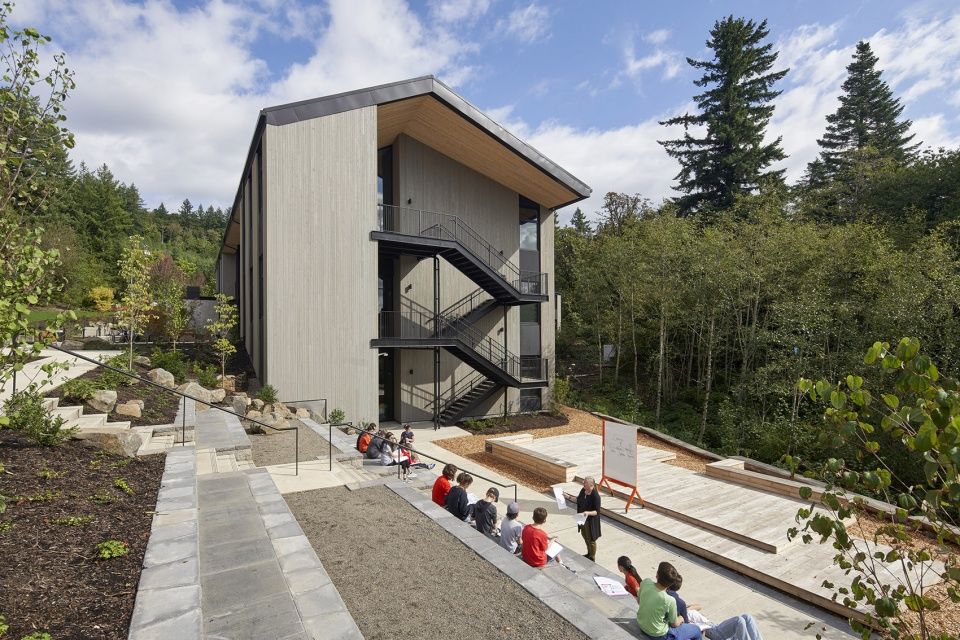
设计灵感来源于场地下坡的哺养木,其分解物是森林中原生的各种幼苗的营养基质。Hacker对这个26500平方英尺的项目的设想正是来自于这种繁殖力:为中学生打造让他们的心灵、思想和身体得到滋养的栖息地,师生之间能够相互协作,并超越自我找到自己的灵感和独立性。
The design solution took inspiration from the nurse logs downslope of the site, whose decomposing mass serve as a nutritive substrate for a diversity of seedlings native to the forest. Hacker’s vision for the 26,500-square-foot project emerged out of this fecundity: to create habitat for middle schoolers that would feed their hearts, minds, and bodies, to work in community with their teachers, and challenge them to find their own inspiration and independence.
▼从场地下坡看项目外立面,view from the downslope of the site to the facade of the project
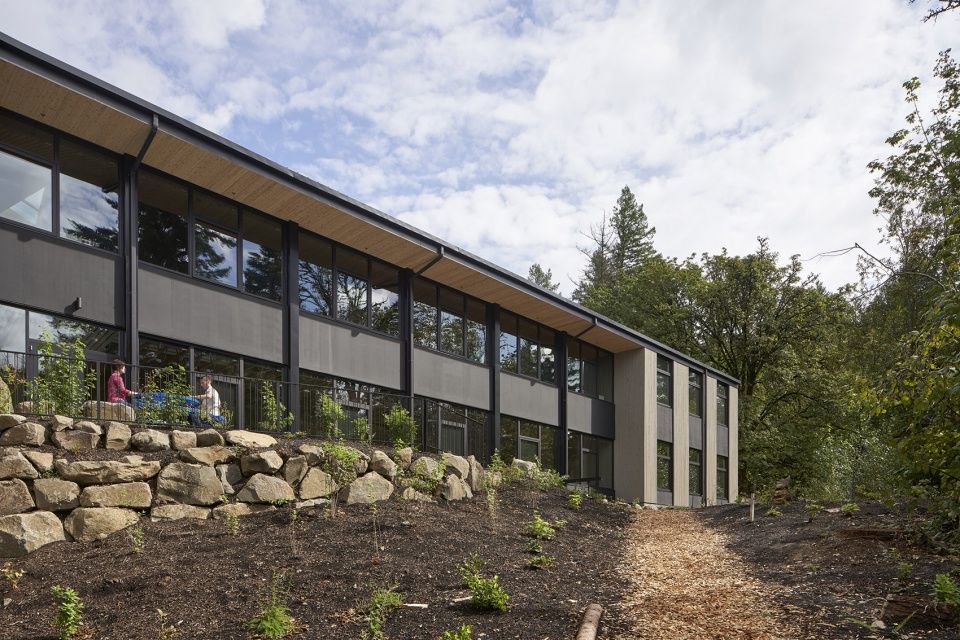
▼受哺养木启发的外立面设计,facade design inspired by the nurse logs
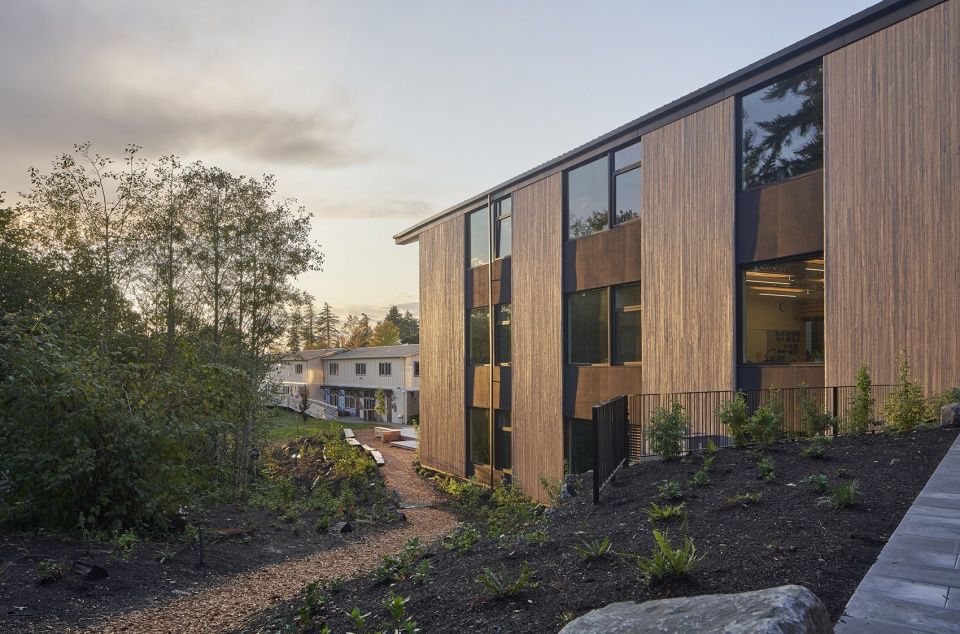
设计理念以串联的功能分区来打造“森林中的木屋”,另一个受森林环境启发的设计理念则是14间教室,5间教师室和行政办公室。每间木屋无论室内还是室外都用木材四面包覆,将森林引入建筑中,模糊了室内外的界限。
The design concept clusters these program spaces to create “cabins in the woods”, another design concept inspired by the forest setting: fourteen classrooms, five teacher pods and administration offices. Whether interior or exterior, each cabin’s four walls are clad in wood, bringing the forest through the building and blurring the lines between inside and out.
▼入口处的木制阶梯,wooden stairs at the entrance
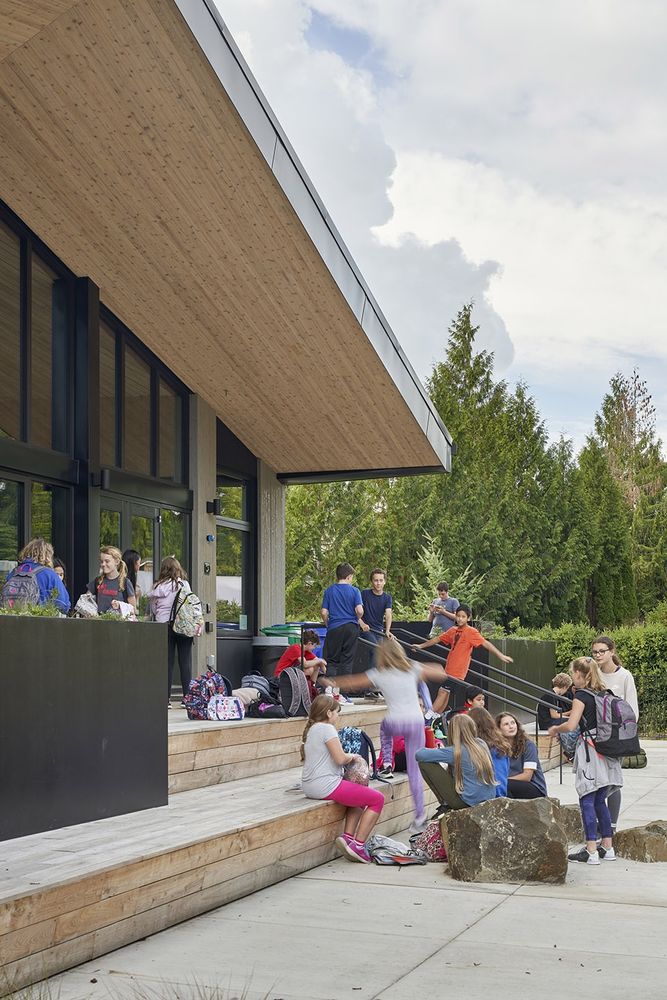
▼从走廊看教室,view from the corridor to the classroom
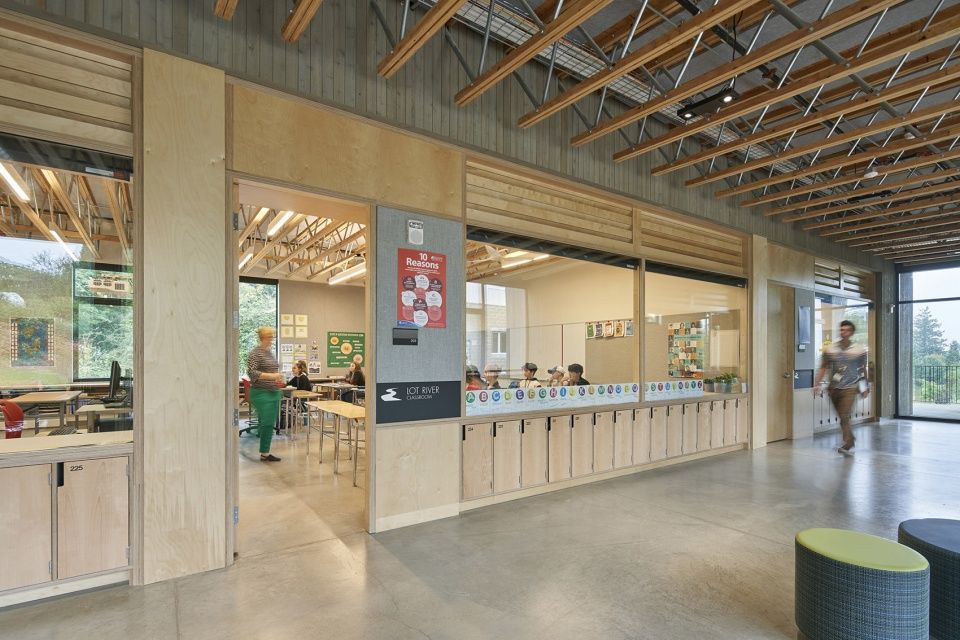
▼教室内景,interior view of the classrooms
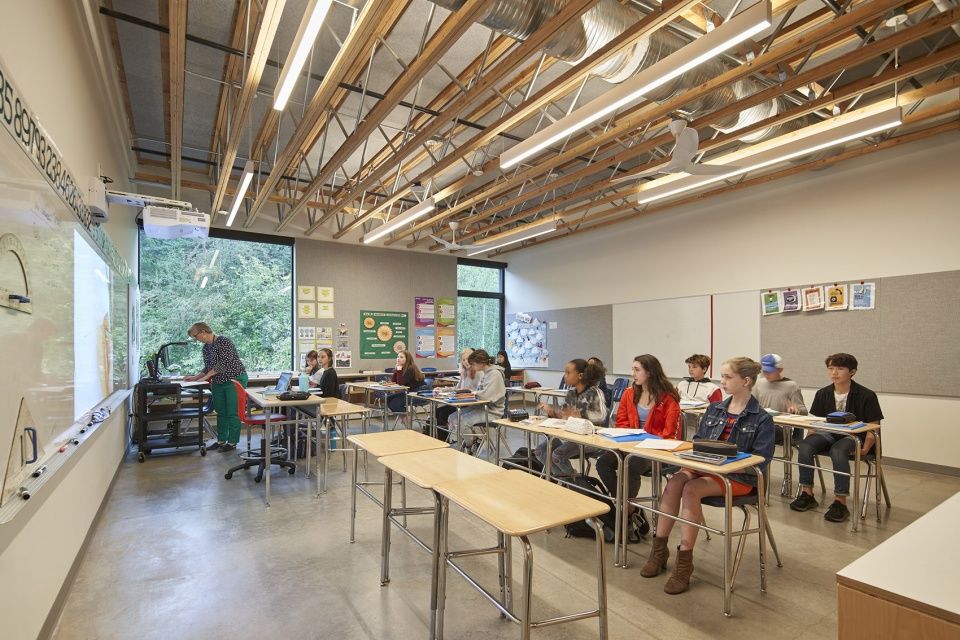
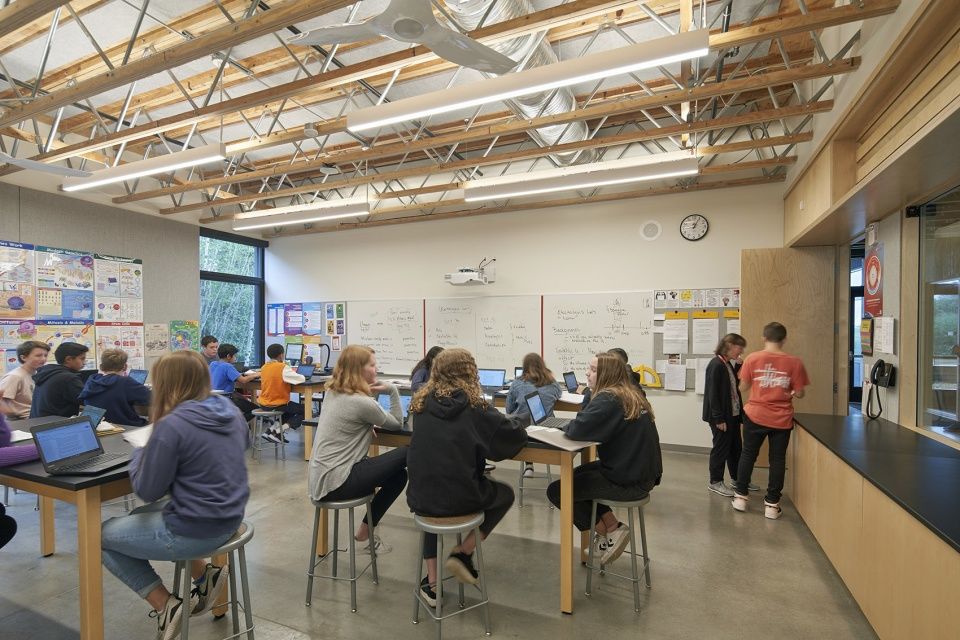
▼办公室内景,interior view of the office
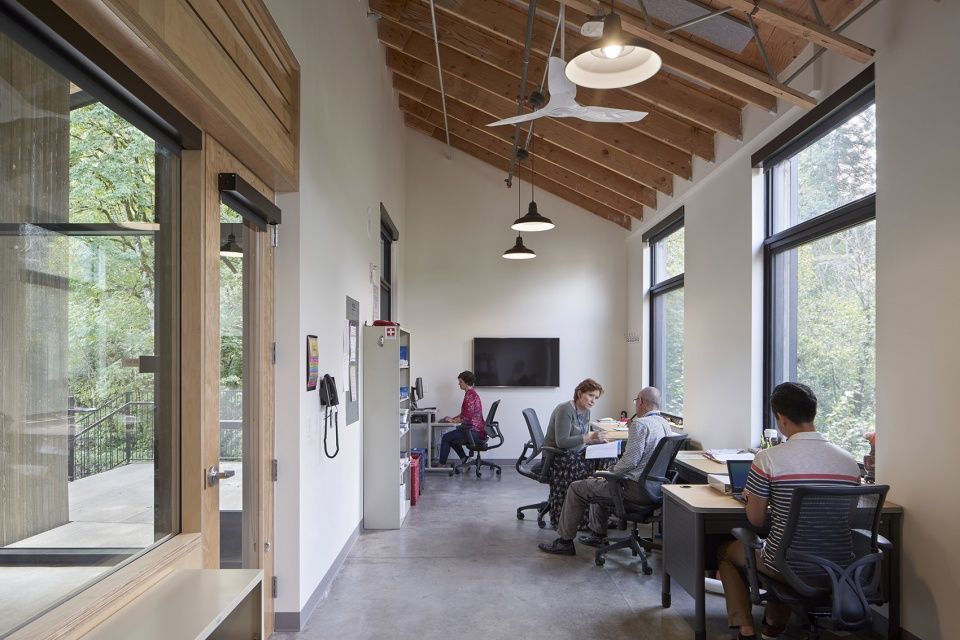
▼从走廊看办公室,view from the corridor to the office

这些通过屋顶串联的木屋循着场地的地形组成了回旋镖的形状,其雕塑般的形态描绘出远处森林的景色。木屋间的空间由大型可开启的窗户界定,在视听方面将居民与沿森林一侧的森林栖息地和沿校园一侧沿线的社区活动相互联系。
These cabins are organized in a boomerang shape that follows the site’s topography then unites under a roof whose sculptural form frames the view of the forest beyond. The space between the cabins is defined by large operable windows that visually and audibly connect inhabitants to sylvan habitat along the forest wing and to the community activity along the campus wing.
▼雕塑般的木制屋顶串联室内空间,sculpture-like wooden roof that connects all interior spaces
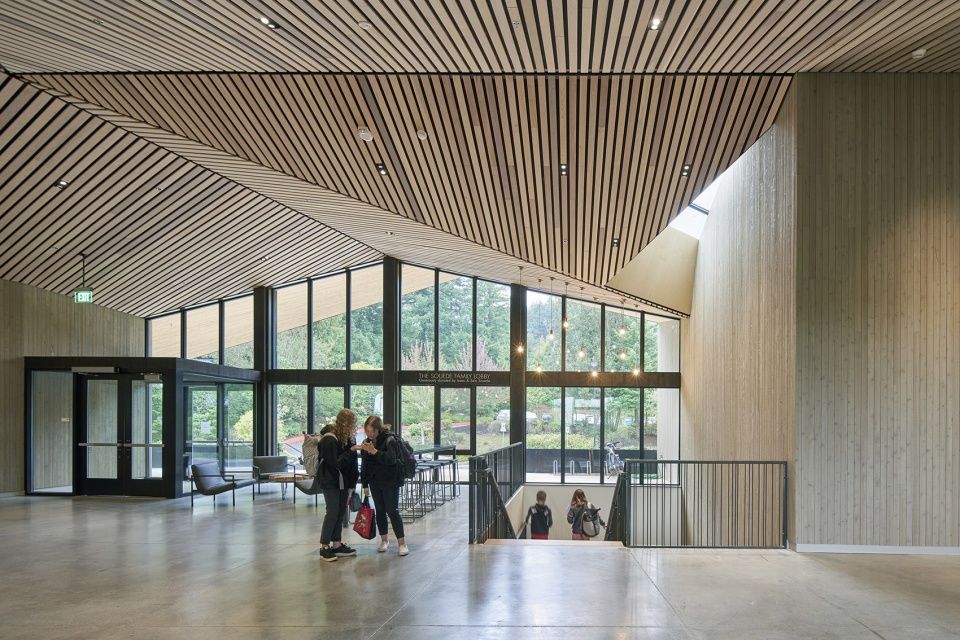
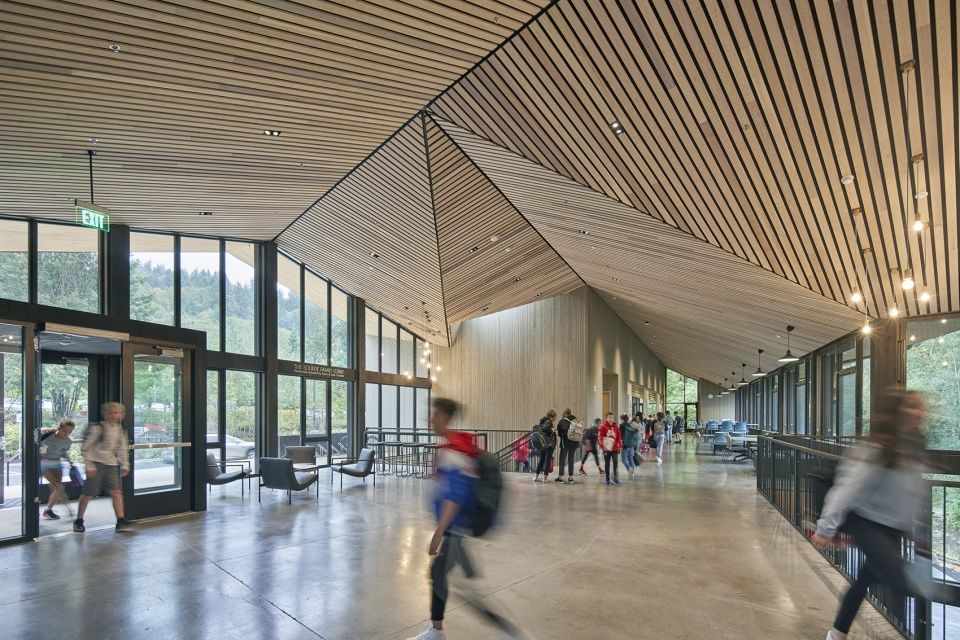
▼窗边近景,close-up views by the window
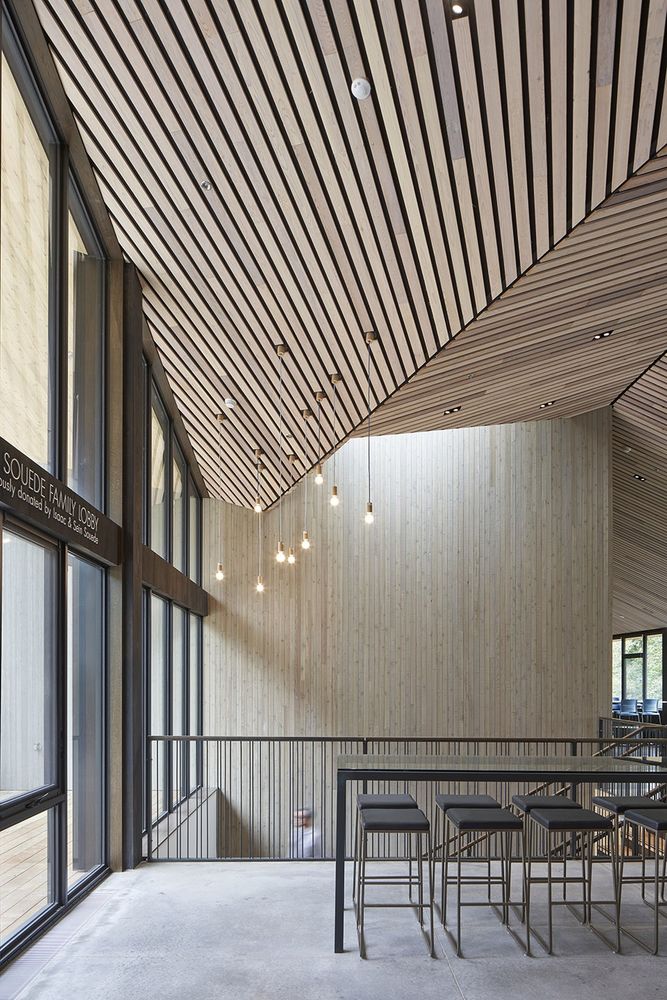
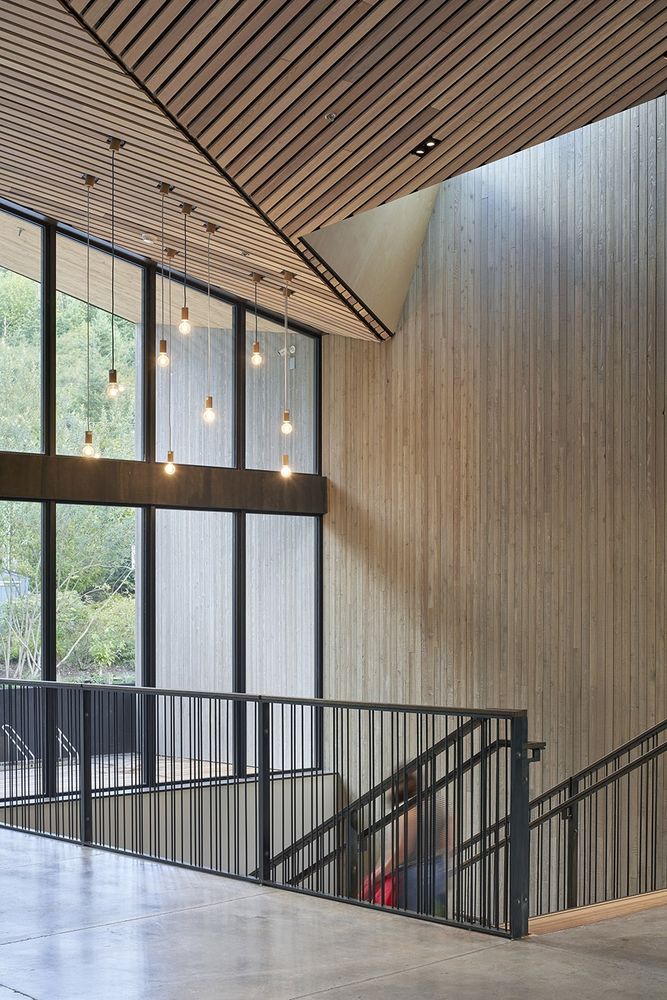
充满活力的单层走廊和两层通高中央聚会空间为学生提供了可以非正式社交学习的场所,制定入口次序的同时,促进建筑的整体回旋镖形路径。这种设计为室内提供充足的自然光并建立起与景观的联系,同时保证自然地交叉通风。
A lively single-loaded corridor provides informal social learning along with the Hub, a central two-story gathering space that anchors the entry sequence and promotes wayfinding throughout the building’s boomerang form. This configuration provides ample daylight and a connection to the landscape while simultaneously allowing cross-ventilation to occur naturally.
▼两层通高中央聚会空间,a central two-story gathering space
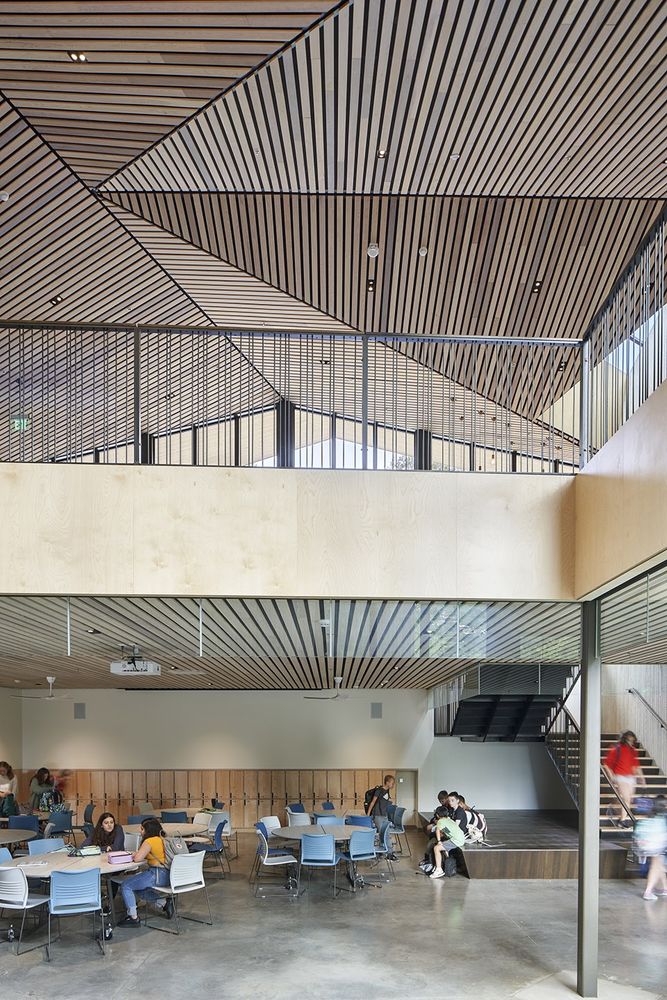
▼从二层看中央通高空间,view from the second floor to the central two-story gathering space
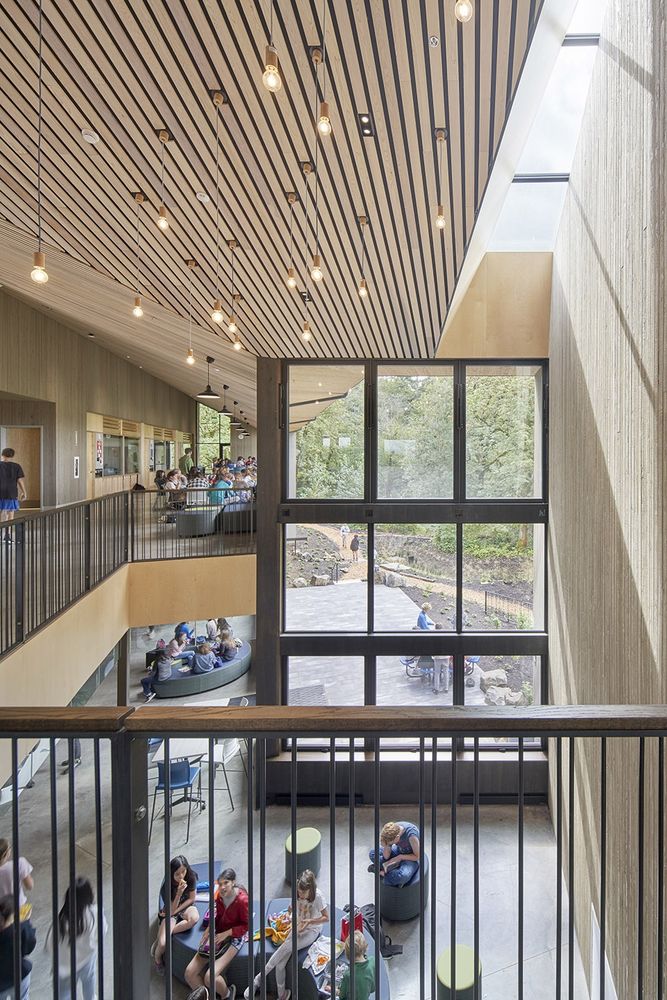
▼从公共区看走廊空间,view from the communal space to the corridor
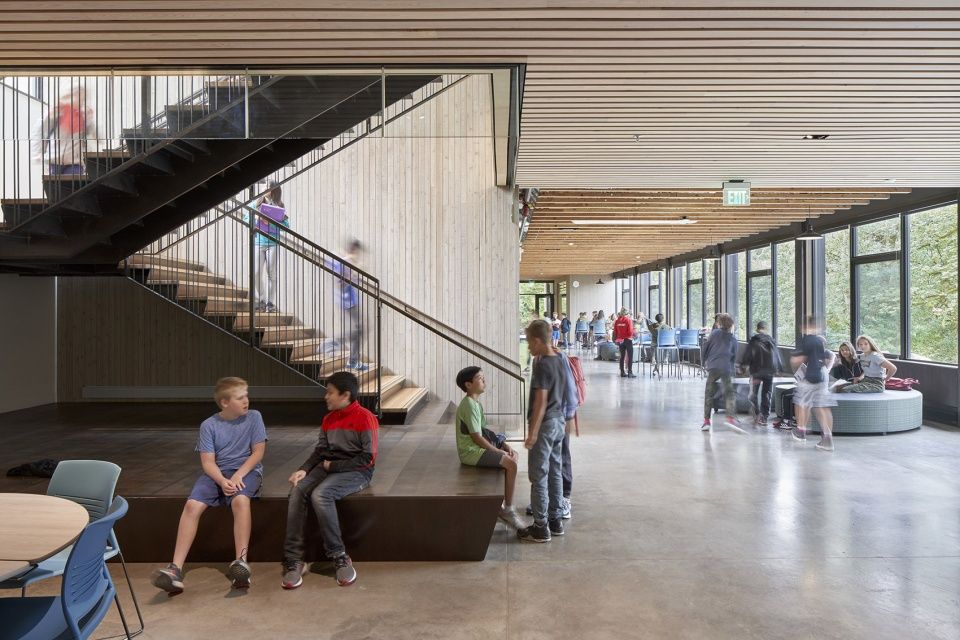
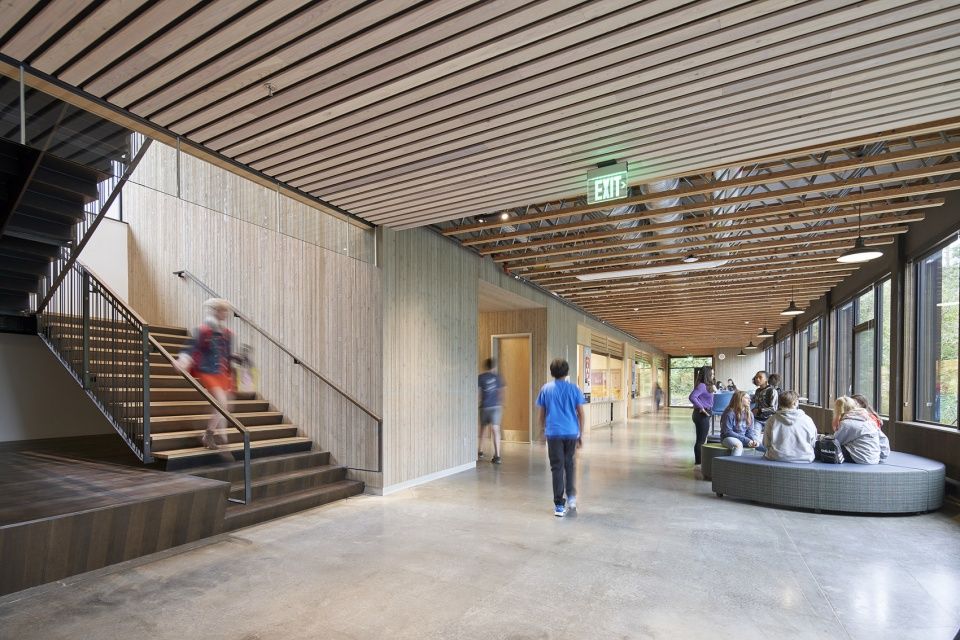
▼单层走廊,the single-loaded corridor
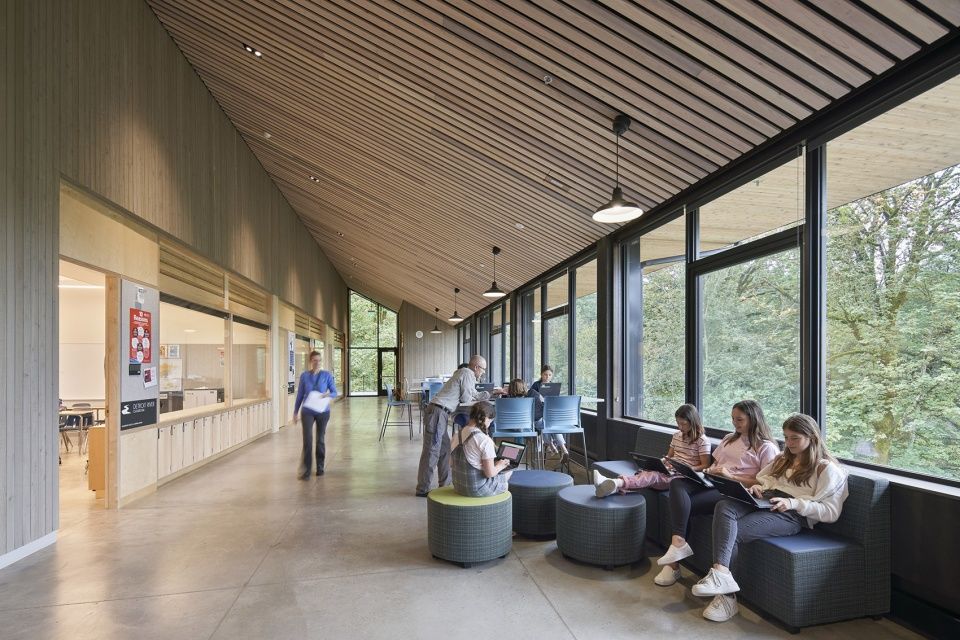
该项目符合美国建筑师协会(AIA) 的2030指南和俄勒冈州能源信托基金的净零能耗计划。
The project is compliant with AIA 2030 guidelines and the Energy Trust of Oregon’s Path to Net Zero program.
▼总平面图,site plan
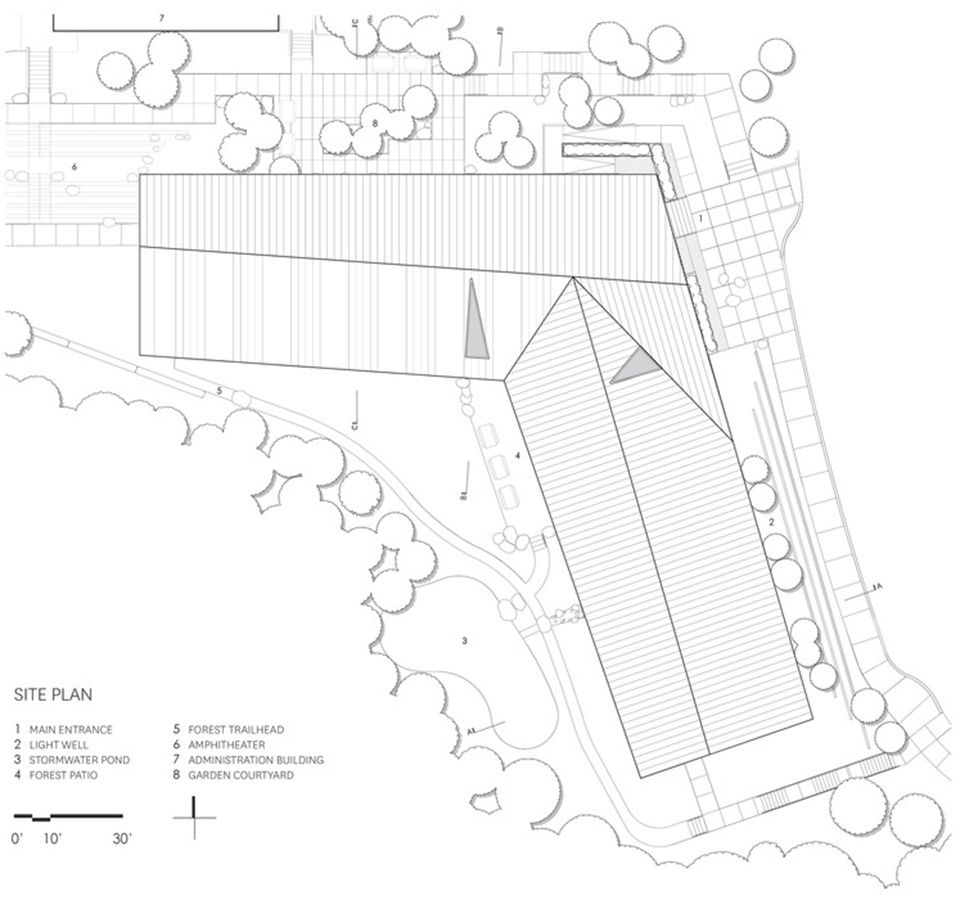
▼一层平面图,entry level floor plan
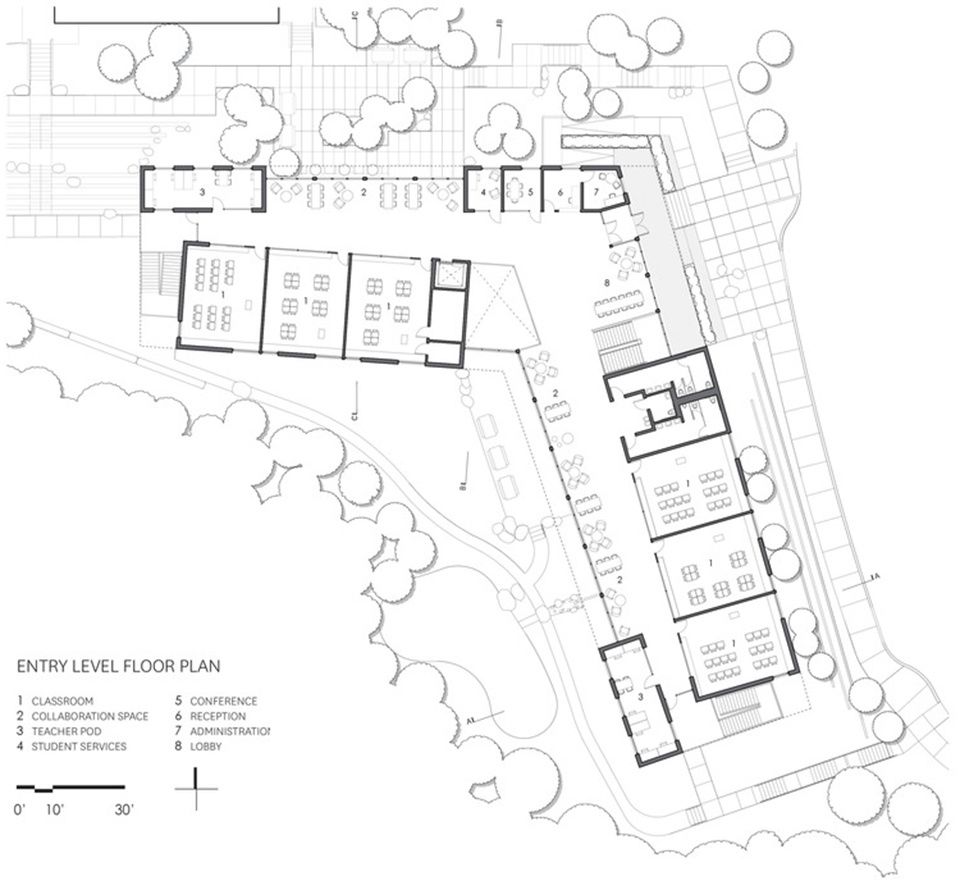
▼地下一层平面图,lower level 1 floor plan
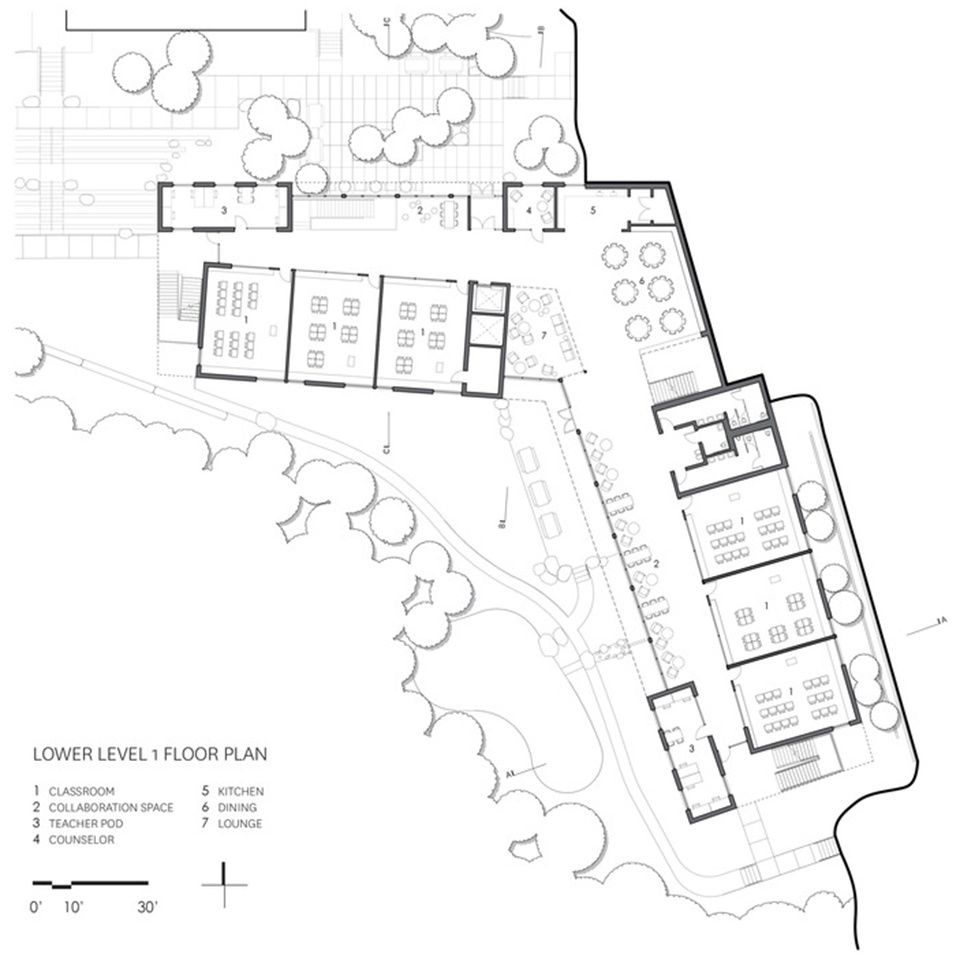
▼东立面图,east elevation

▼剖面图A-A,Section A-A
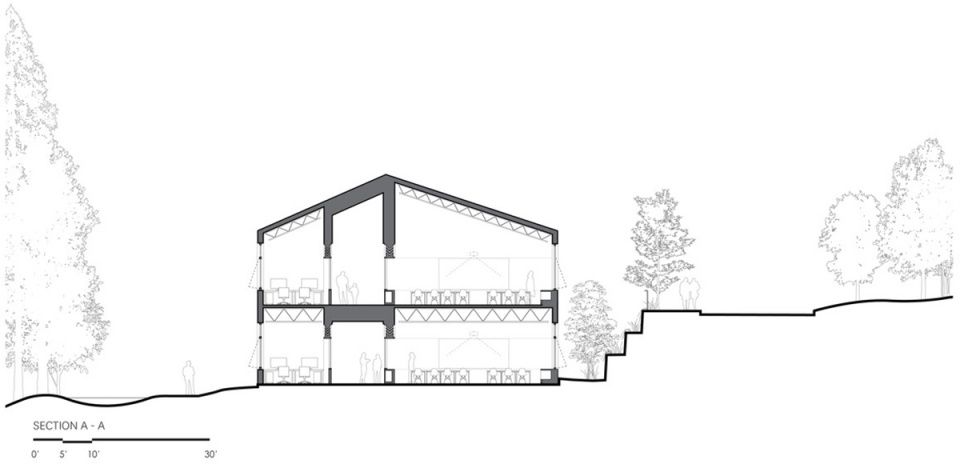
▼剖面图B-B,Section B-B
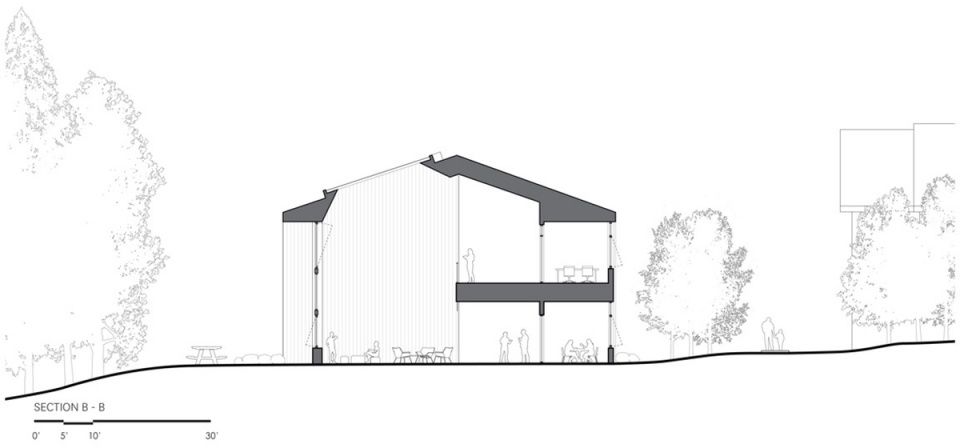
Project Team
Architecture and Interiors: Hacker
Landscape: PLACE
Civil Engineer: Standridge
Structural Engineer: Madden & Baughman
Mechanical & Plumbing Engineer: PAE
Electrical Engineer: PAE
Hacker Design Team
Stefee Knudsen – Project Manager
David Keltner – Design Principal
Sarah Post-Holmberg – Project Architect
Lewis Williams – Design Team
Client: French American International School
Photography: Bruce Damonte


